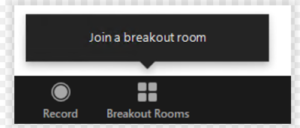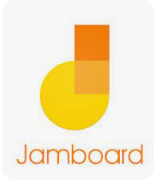INTRODUCTION:
How to best create an online collaborative learning environment has become a goal in my teaching. Being a student in this program has helped me to improve my teaching. I now know what it is like to participate in online lessons instead of leading them. I am grateful for the change in perspective!
I agree with Bates (2019) that collaborative learning can be done just as well online as in the classroom. Certain adaptions must be made, but adaptions happen in a “regular” classroom. The importance is what the educator chooses to do with the tools at their disposal.

A BRIEF HISTORY:
Building community within the online courses I teach has always been a priority. This was easy initially, as I only had students from 2 rural communities. I was teaching a hybrid model in that I was in the same classroom with one group of students, and the other group used Zoom to join. That course delivery model didn’t last long, and ironically, it was because it was successful. Early learning students from other rural communities joined my class and it was impossible to travel to them. The course delivery model changed into synchronous classes.
METHODS I HAVE USED:
I have tried many different ways to create an online collaborative learning community. Some things have worked, some have not. I do not like discussion forums. I have found they do not meet the objective of collaborative learning and are very hard to evaluate. It is incredibly cumbersome to go through every post for each student and assign a mark, even when a marking rubric is provided. What is accessed? The quality of the post? The quantity of the posts? I prefer to use breakout rooms in every lesson and I try to stay out of the rooms. I will pop in and out to see how everyone is doing and gauge the nature of the conversations. I am happy when I hear the students chatting about something that has nothing to do with the course, as this means they are getting to know each other.

I have used Flipgrid for students who do not want to talk during the classes. These are the students who will not turn on their camera. It surprised me that the shy students like Flipgrid as they have to be in front of the camera. I think it is successful because the students are in control. They can redo the video as many times as they please and submit the one they like the best. I can learn much about the students and find out what they know of the course content in the Flipgid videos.

I have used Jamboard with much success as the interactive nature of the app can create some powerful collaborative learning experiences. This can get diminished if the app is used too often.

I also have implemented the use of videos as an assignment to demonstrate learning. For example, some students chose to make a video of their early learning center. They went on a tour of each room and described what areas of quality in early learning was used in the center and what they would like to see improved. This was in the place of a written submission. I was able to determine what the student valued as quality from the narration and it was highly successful.

FOR FUTURE CLASSES:
I plan on using videos as teaching tools, this is one main take-away from this course. I enjoy how Lumi is interactive and I feel more confident in using the tool. I like how I can embed questions and formative assessments at the end of videos. I plan on creating videos that the students can watch and discuss the questions together in the breakout rooms. I am going to use Screencastify videos in my teaching as well. This tool is new to me and I plan on spending some time experimenting with it. I hope to use it when students are absent from class and need to make up missed material. I never like recording the class and sending the link to students. It is a very passive way to learn and I hope to use Screencastify in a more interactive way.


THE GOAL:
Yes, there are limitations to online collaborative learning as outlined in Chapter 4 of Bates (2019). The limitations can be mitigated as my classes are small. Also, my courses are from the Faculty of Education and are easier to accommodate the challenges of online learning. The courses are collaborative and inquiry based. Flexibility is key but that is needed for all teaching, whether the courses are online, synchronous, asynchronous or in the classroom.


Thank you for sharing your thoughts and a bit of your journey Laura! I was very interested to read your comments and ideas about Flipgrid as I am trying that app for the very first time and I find it engaging! I was also surprised at first by your statement that some of the shy students prefer this method of sharing due to the control that they have and I agree! That is such a good point and an important consideration to take forward when choosing a variety of methods to build community with a variety of learners.
You summarized your post perfectly, “Flexibility is key but that is needed for all teaching, whether the courses are online, synchronous, asynchronous or in the classroom.”
Best wishes as you continue on your learning journey!
Thank you for the in-depth blog post!
It’s great to hear you plan to incorporate more videos as teaching tools, leveraging platforms like Lumi and Screencastify. These tools enhance engagement and allow for formative assessments, promoting active learning and discussion among students.
Small class sizes and courses designed for collaboration and inquiry-based learning are beneficial in creating a conducive learning environment. Flexibility and adaptability, as you rightly mentioned, are vital components of effective teaching regardless of the learning mode.
Thank you for sharing your thoughts!